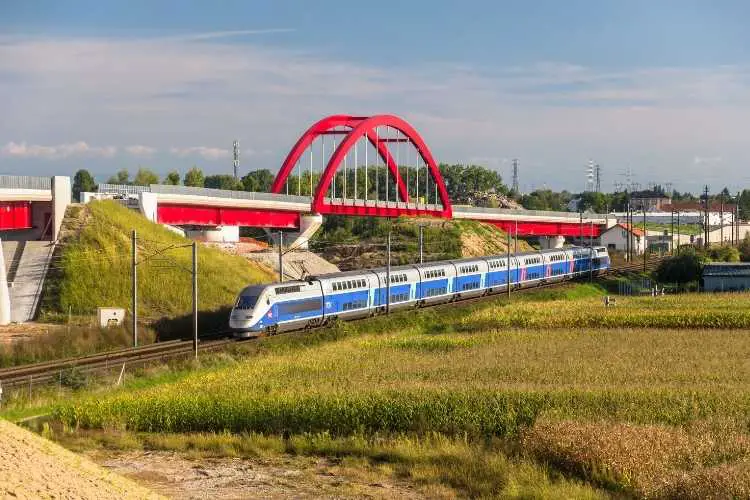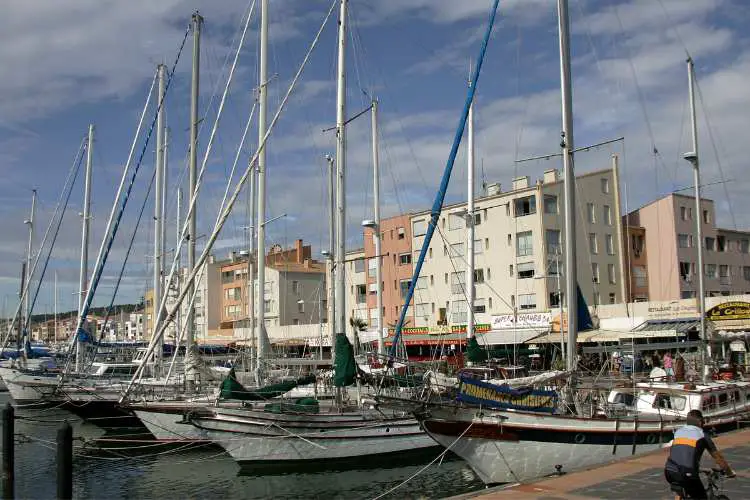If you’re visiting France on vacation or business you need our ultimate How to travel in France info. This is our complete guide and tips on travelling in France by train, car or coach.
Once in France, you want to be able to get around with the minimum of fuss and inconvenience. The most versatile option is to travel by car; the most relaxing is to go by train.
Air travel is fine for getting to France and its main cities, but internal flights have much the same issues that are experienced in other countries. Not least the distance of the airport from the city centre. Even though shuttle-bus services and taxis provide an efficient way of getting to your hotel.
Tips for travelling in France
Once at your destination there is no substitute for exploring on foot; serendipity is an excellent guide (usually).
Almost all of the main cities and large towns have excellent tram networks that allow you to explore a little further out from the centre. Ask for help at tourist information offices or at your hotel if you fancy going native and hopping on a bus or tram.
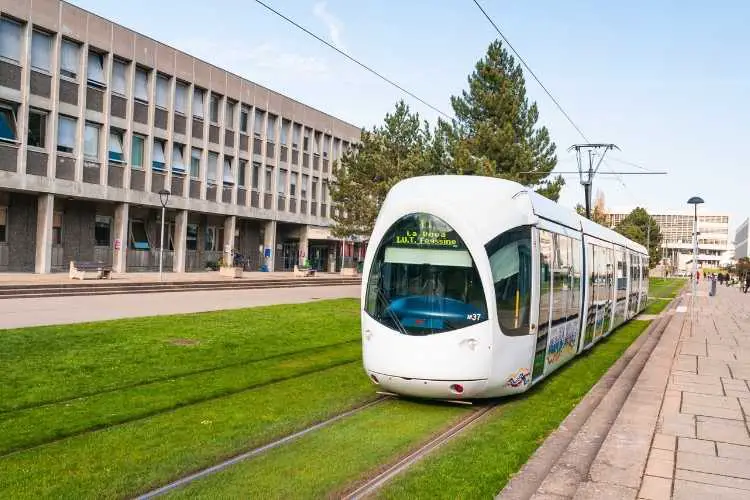
Travelling in France by train
When transferring through Paris, it is important to know that your connecting train may depart from a different station. There are five main train stations in Paris (Gare du Nord, Gare de l’Est, Gare de Lyon, Gare d’Austerlitz and Gare Montparnasse) each of which can be easily found on the Paris Metro or RER network.
If you’re feeling energetic and have the time, it is only a 15-minute walk from Gare du Nord to Gare de l’Est, but for connections via other stations, you might also consider taking a taxi.
Travelling in France by train is invariably a pleasure; trains are comfortable, generally on time and offer excellent value for money.
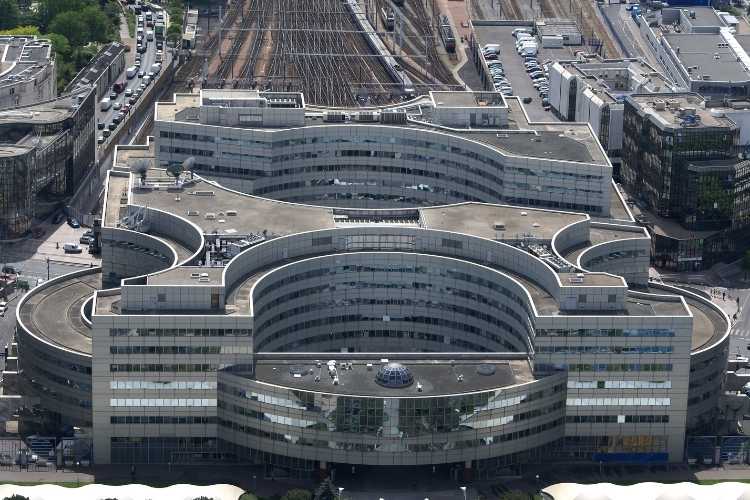
With 1,700km of dedicated high-speed lines, plus thousands more of main line and branch line, the French rail network links all main towns, and extends deep into rural France. French trains are on the whole comfortable, punctual and relatively cheap, and, incredibly, those sleek, high-speed trains (TGV) have been operating since 1981 (Paris to Lyon).
The opening of the new London terminal for Eurostar at St Pancras brought the journey time from London to Paris down to just over 2 hours, city centre to city centre.
In terms of speed and convenience, both Eurostar and the TGV clearly demonstrate that on long journeys, the train really does take the strain, and is certainly far more convenient than flying.
Not so very long ago, the journey from Paris Est to Strasbourg took more than 4 hours; now it is a little over 2 hours.
Twice in the recent past, the author has boarded a train in Avignon, and been home in the north-west of England in under 13 hours…a long day’s travelling, but remarkable when you think about it…Avignon-Lille (TGV), Lille-London (Eurostar), London-Preston (Virgin Trains). It’s not a journey you’d want to make on a regular basis, but it’s good to know that you can.
The typical journey time from Paris to Lyon is just 2 hours, and to Marseille, 3 hours. From May 2015, there will be a direct service from London to Marseille.
But note: all travel on TGVs must be booked in advance, and all seats are reserved. However, you can often reserve a seat on a TGV at the station ticket office up to just a few minutes before departure.
If there is a negative at all, it is that the on-board refreshment service on TGVs is not all it could be, so be sure to take something with you. Even so, things are getting much better in this respect, especially on the TGVs.
Connecting train and air
If you do have to go to France by air, then excellent forethought by the planners of the TGV network has connected it directly to, so far two, major airports. There is a major TGV station right underneath Terminal 2 at Charles de Gaulle airport in Paris, and a TGV station in the middle of the Lyon Saint Exupery airport.
Away from the service provided by TGVs, the SNCF city-to-city lines provide an excellent service that doesn’t require advance booking. SNCF also operates an efficient stopping service within regions, extending far into rural areas.
Tip for travelling in France by train
Whichever service you use it is essential to remember that your travel tickets must be validated (composter) by using the orange automatic date-stamping machines on or at the platform entrance.
If you fail to do this, you can run into difficulties you’d rather not deal with, when the train conductor passes through.
Travelling in France by car
With a similar population to UK, but considerably more space, it follows that car travel in France is nothing like so fraught with difficulty as in the UK. In particular, the opportunity to explore country lanes often leads to unexpected delights and pleasant surprises.
Driving in France, at a practical level, is no more difficult than driving elsewhere, although it helps if visitors from the UK remember to drive on the right! Of course American visitors will have no such issues.

But, if there is one place where you are advised not to drive, it’s the Étoile, the massive roundabout that surrounds the Arc de Triomphe in Paris (above). There is a story, which may be apocryphal, that from the moment a French driver enters the Étoile, until the moment he leaves, his car insurance is null and void. Stand nearby, at the roadside, and you’ll get the idea.
Elsewhere, the roads of France are a pleasure to drive, but do take note of the idiosyncrasies mention in ‘Useful to know’.
Using taxis in France
Taxis are a common mode of transport in France, especially in the bigger cities. There are, for example, nearly 16,000 taxis in Paris. Taxis can be found at marked taxi ranks, booked online, over the phone or simply hail one in the street.
In order to determine if a taxi is available, you must refer to the illuminated white box situated on its roof: if it is red, then it’s occupied; if it is green, then it’s available.
But you cannot hail a taxi if it is less than 50m from a taxi rank; it is in a bus lane, or if it is already reserved (signal box is white)
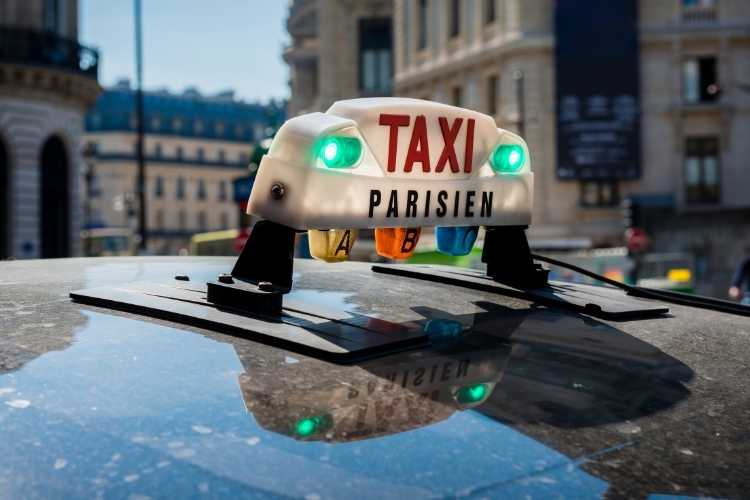
Since June of 2007 in Paris, a unique number to call (01 45 30 30 30) has been in place allowing you to call taxis equipped with a terminal. Through an automated assistant, you can choose which arrondisement and station is the nearest to you.
If the station then doesn’t respond, you will be automatically connect to a second or third in proximity.
You can equally reserve your taxi through internet and phone taxi services. Rates will depend on the area, time of day, distance travelled and number of passengers for each trip.
Read our Guide to Free Wi-Fi in Paris
Travelling in France by coach
Eurolines
Eurolines have a well-developed network and cover all major European capitals from Paris by coach. They also have an extensive national network within France, covering 224 French destinations, offering another alternative for getting around in France.
Most French cities have a “Gare routière” – a coach station – with regular services within the region. But for travel between regions, a train is your best option since inter-regional bus services are limited. Buses are used quite extensively for short-distance travel within départements especially in rural areas with relatively few train lines.
Eurolines also operate Isilines, a new coach service offering exceedingly cheap fares that enable you to travel at remarkably low prices. Perfect for budget and unhurried travel.
OuiBus
Ouibus is a long-distance coach service that links the major European cities. With its latest generation regular lines, OuiBus aims to become the leading European provider of long-distance coach travel.
On board passengers will find comfort and accessibility, attention and information. With one main point of focus: to reinvent the passenger experience beyond merely providing client satisfaction. An inherently sustainable solution that enables OuiBus to meet a wide range of passenger needs:
The attractions of using OuiBus include:
All coaches are accessible to passengers with reduced mobility; all the OuiBus coach stations are located close to town centres and are easily accessible to public transport.
Each row of seats has a 220V electrical socket so that you can plug in and recharge your devices during the journey; with OuiBus, you benefit from fixed all-in prices; WiFi connection is free on OuiBus coaches irrespective of the country you are in. So you can surf, consult your emails, share your journey on Facebook, etc..

